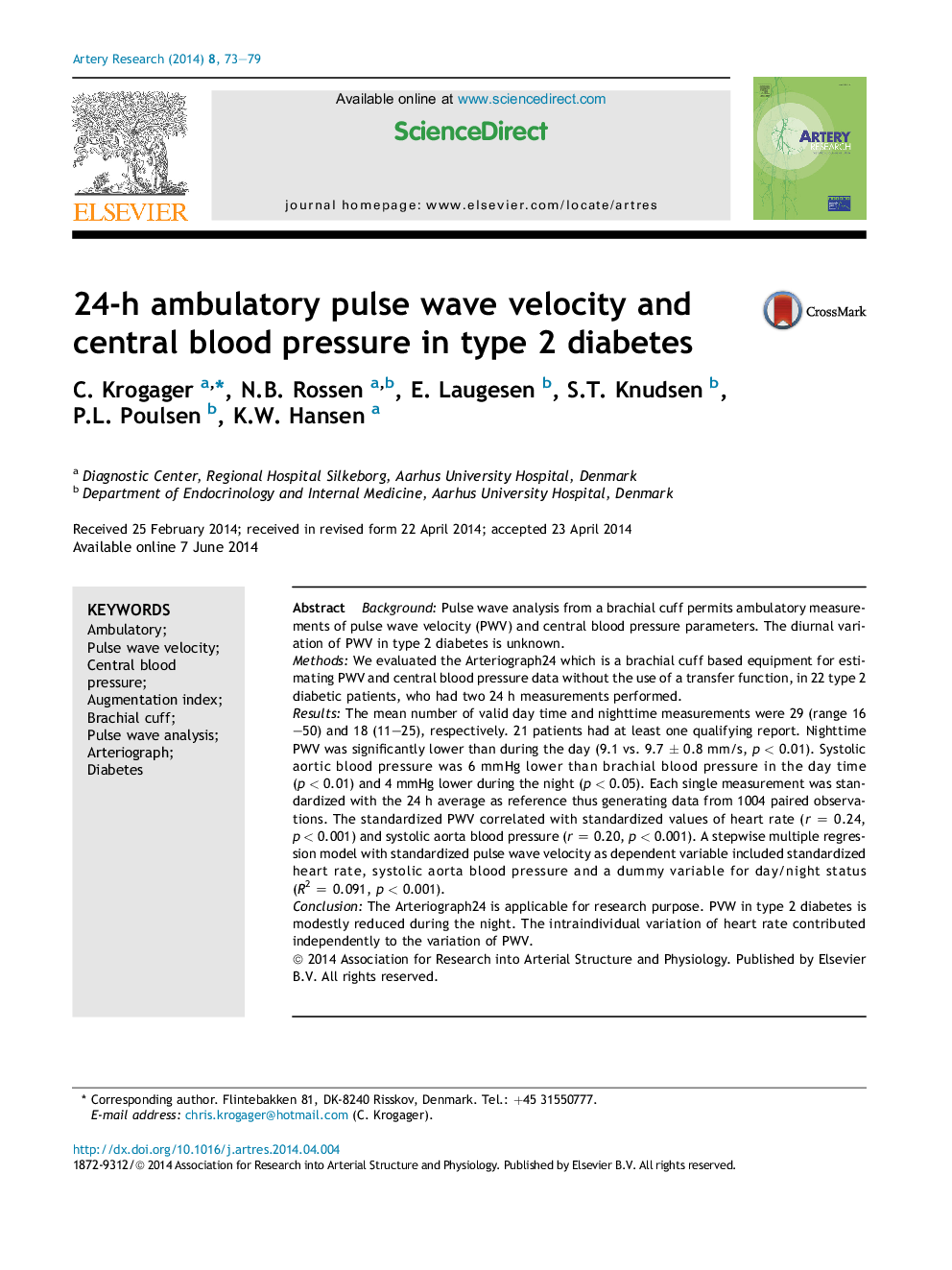| کد مقاله | کد نشریه | سال انتشار | مقاله انگلیسی | نسخه تمام متن |
|---|---|---|---|---|
| 5942460 | 1172282 | 2014 | 7 صفحه PDF | دانلود رایگان |

- Pulse wave velocity shows diurnal variation.
- Arteriograph24 can be used for ambulatory measurements of PWV.
- The intraindividual variation of heart rate contributed independently to the variation of pulse wave velocity.
BackgroundPulse wave analysis from a brachial cuff permits ambulatory measurements of pulse wave velocity (PWV) and central blood pressure parameters. The diurnal variation of PWV in type 2 diabetes is unknown.MethodsWe evaluated the Arteriograph24 which is a brachial cuff based equipment for estimating PWV and central blood pressure data without the use of a transfer function, in 22 type 2 diabetic patients, who had two 24 h measurements performed.ResultsThe mean number of valid day time and nighttime measurements were 29 (range 16-50) and 18 (11-25), respectively. 21 patients had at least one qualifying report. Nighttime PWV was significantly lower than during the day (9.1 vs. 9.7 ± 0.8 mm/s, p < 0.01). Systolic aortic blood pressure was 6 mmHg lower than brachial blood pressure in the day time (p < 0.01) and 4 mmHg lower during the night (p < 0.05). Each single measurement was standardized with the 24 h average as reference thus generating data from 1004 paired observations. The standardized PWV correlated with standardized values of heart rate (r = 0.24, p < 0.001) and systolic aorta blood pressure (r = 0.20, p < 0.001). A stepwise multiple regression model with standardized pulse wave velocity as dependent variable included standardized heart rate, systolic aorta blood pressure and a dummy variable for day/night status (R2 = 0.091, p < 0.001).ConclusionThe Arteriograph24 is applicable for research purpose. PVW in type 2 diabetes is modestly reduced during the night. The intraindividual variation of heart rate contributed independently to the variation of PWV.
Journal: Artery Research - Volume 8, Issue 3, September 2014, Pages 73-79